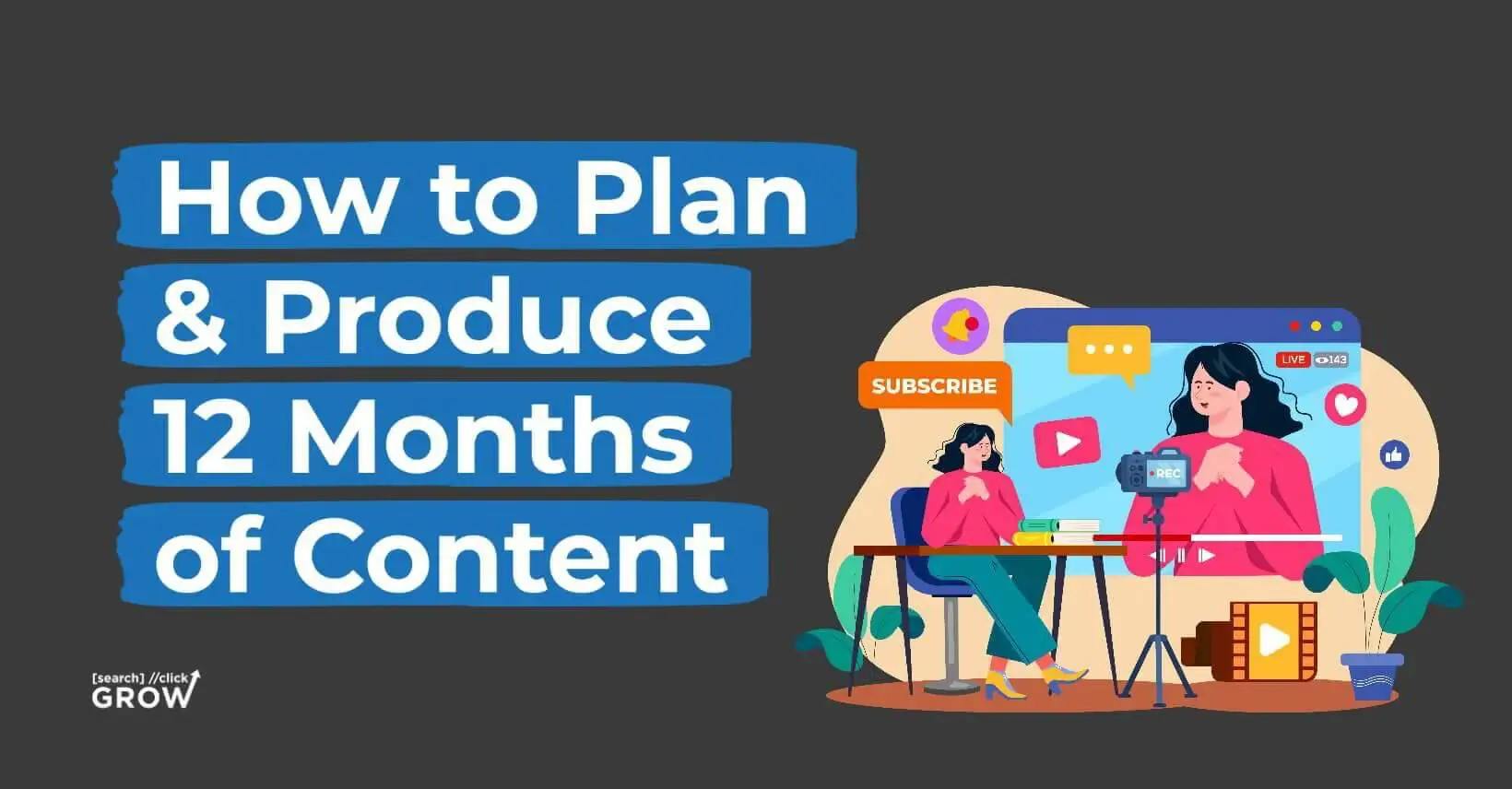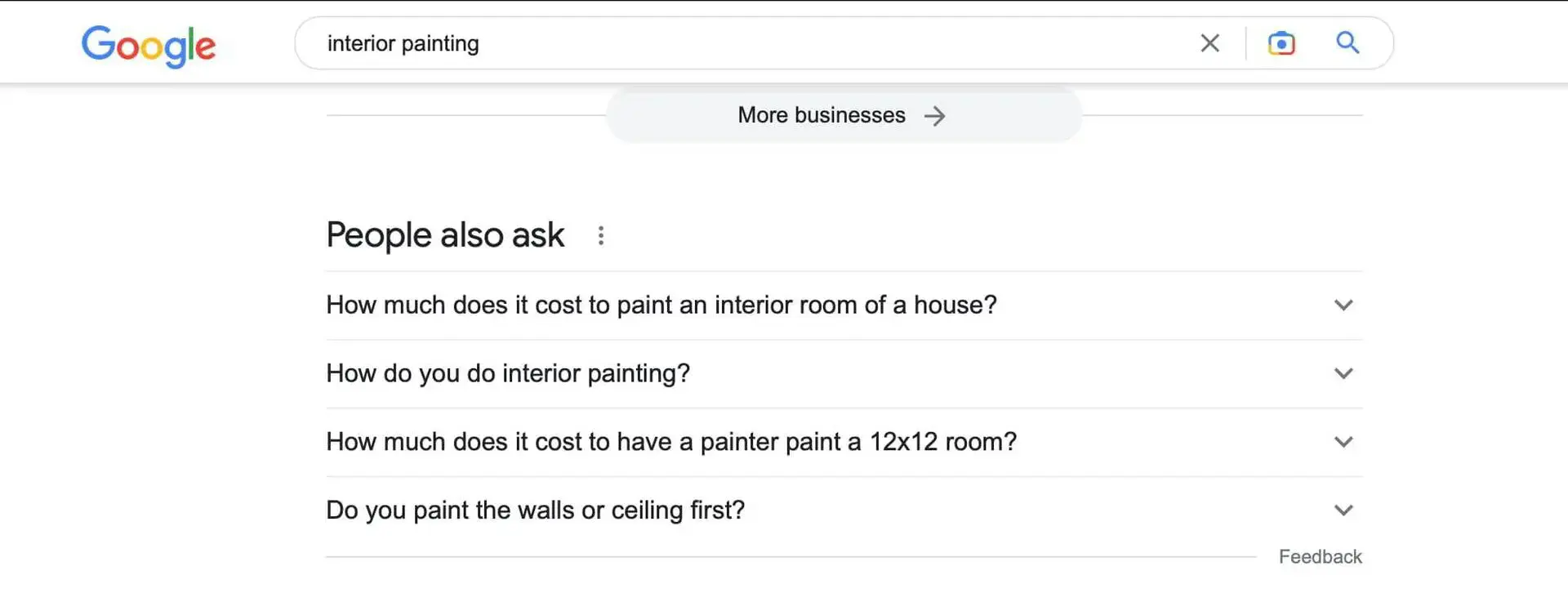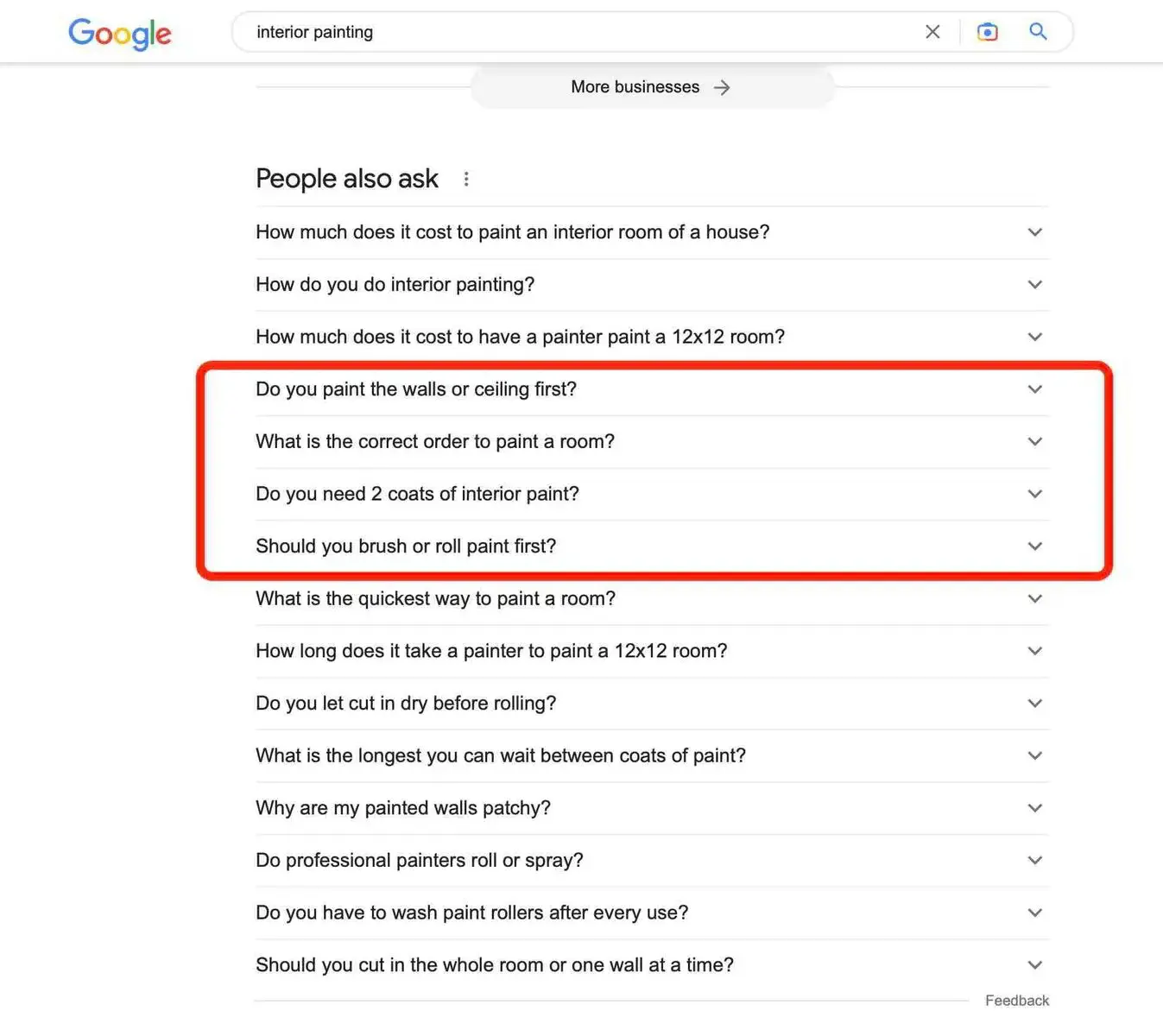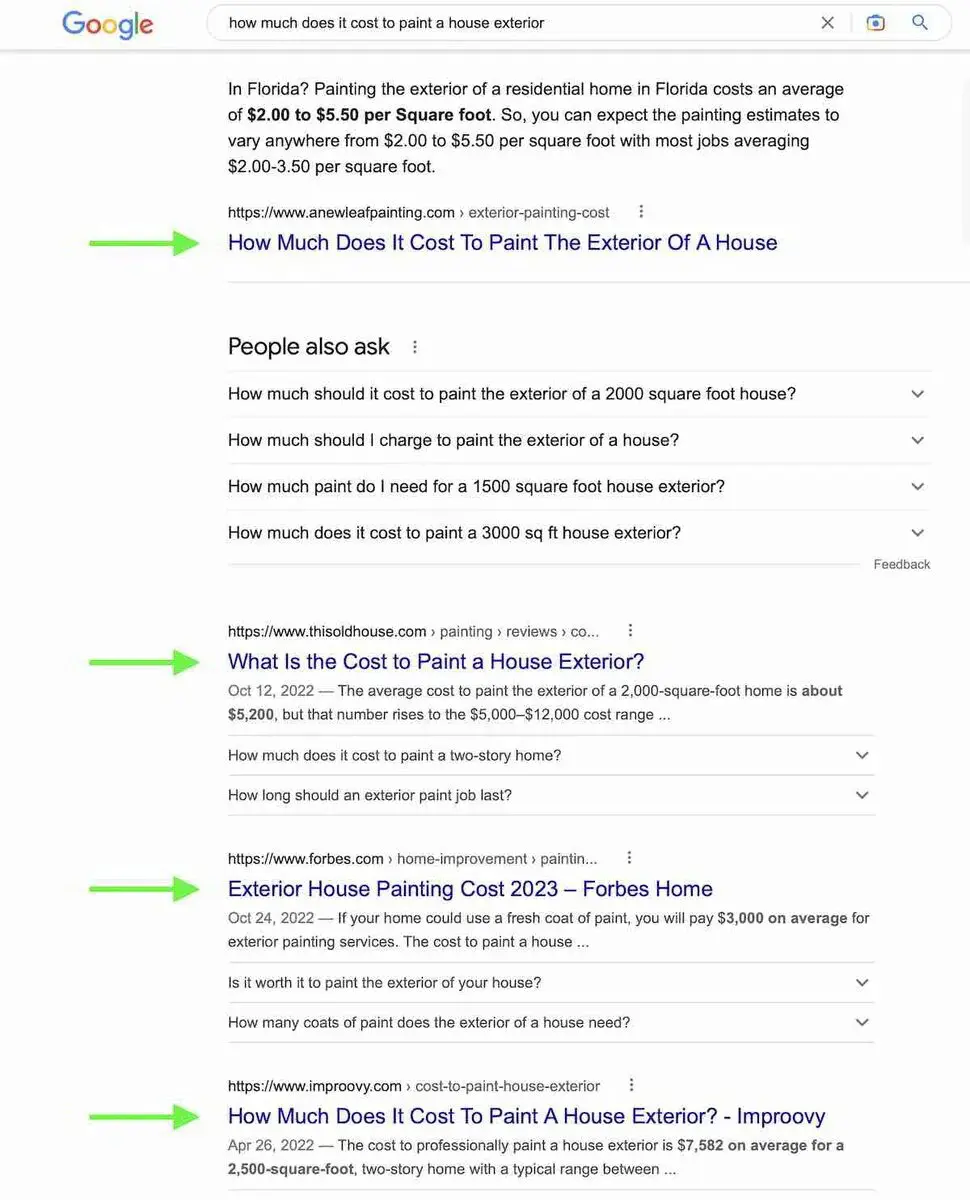One of the best pieces of advice any marketing specialist will give you is to publish as much content on as many platforms as possible.
Why? Content is what establishes your brand. It’s what makes you an authority in your industry and helps boost your rankings in search engines. Above all of these, your content is a way to connect with your customers.
Still, publishing content is not as easy as it sounds. Without a proper strategy, you could end up creating videos, blogs, or podcasts that are incoherent and disorganized.
It’s important to create a plan that helps you prepare what you’ll publish in the next few months or years.
So, how do you go about planning an entire year’s worth of content? In this article, we will share insightful and easy-to-follow steps broken down into two parts:
- How to Plan 12 Months of Content
- How to Turn One Piece of Long-form Content Into 40+ More
Let’s dive into it!
Part 1: Planning Content for 12 Months
The first step to publishing a large amount of content is to have a solid plan to use as a guide. This will help you focus on the topics you’ll publish and ensure coherence.
Here’s how you can do this using our 12-Month Content Planner:
Step 1: Be Clear on Your Specialty
If you’re a small or medium-sized business, you must have your own niche in your industry.
Some bigger companies can afford to diversify, but your strength is in offering a particular type of product or service. This principle also applies to planning and creating content.
As we mentioned, there’s a risk of incoherence and inconsistency if you publish just any type of content you want.
Your goal is to become a trusted authority in your niche, so your focus should be only that. Plus, if you’re already a well-experienced professional in your niche topic, you’ll have a much easier time sharing your knowledge. You won’t have to do extensive research just to understand basic concepts.
Let’s say you’re a painting contractor. Painting services can be a lot of things, so you can further specify it into either residential or commercial painting.
Let’s say you belong to the former, so your specialty is residential painting. This topic is great because it’s broad enough to discuss the related subject matter.
Okay, so we have the specialty. Now what?
Step 2: Create 12 Themes
The next thing you’ll want to do is provide themes for each month of the 12-Month Content Planner.
This will help you further focus your topics so that you can avoid repetition during the latter part of the year. In addition, adding these themes to the monthly outline allows you to plan ahead with the research you’ll do and the format of content ideal for the topic.
So, how do you find the themes you’re going to use for each month? Well, you could always rely on your stock knowledge about your niche.
In our example, a residential painting contractor can use themes like interior painting, cabinet painting, and exterior painting.
Of course, every niche has specific themes, and you will need to determine what they are based on your experience and knowledge of your industry.
NOTE: If you find yourself short on ideas, there’s always Google and other search engines. It may take a bit of know-how to find the themes you’re looking for, but no worries, we’ve shared how to do that in the next step!
Step 3: Create Weekly Topics
Let’s say that you already have your complete set of themes for your monthly content. The next step is to create weekly topics, which will be the actual content you’ll publish regularly.
In our example, the theme for January is interior painting. So, how do you find weekly topics under interior painting? With Google!
Google has evolved from more than just displaying web pages related to a search query. The search engine now also provides something called “rich results,” which is really just more information about the topic you looked up.
One of these rich results is the “People Also Ask” section, which is basically a frequently asked questions area where Google displays related searches. This is where you can get your weekly topics for free.

Click the down arrows next to the questions, and you’ll expand the “People Also Ask” section with more questions.
Of course, some of these questions will not make sense, and there are also questions that you shouldn’t discuss if you want to encourage people to work with you.

For example, you shouldn’t discuss DIY interior painting if you aim to provide interior painting services. It’s all about finding the weekly topics that will align with your goals.

Why? Google chose those articles because it thinks they are the best ones. If you want to be the best and rank higher, mirroring what the top websites are doing is one way to achieve that.
That’s it! Now, you have a general outline of the content you’re going to create for the next 12 months.
The hardest part comes next: creating the content itself. It’s definitely not a walk in the park, but you can work smart and make the entire thing easier.
How? Let’s proceed to Part 2.
Part 2: Turning Long-form Content Into 40+ Pieces
You could publish content weekly under the topic you chose, but you’ll need to work for many hours a day just to create videos, social media posts, and blog posts.
What if we told you there is a way to publish as many as 40 content types with even just four hours of work for the whole week?
Here’s how that works:
Step 1: Create Long-form Content
You’ll need to dedicate at least four hours of your week to creating long-form content.
This will serve as the foundation for the rest of your short-form content, social media posts, and email marketing copy. It doesn’t matter which format you use, be it video, blog post, or podcast. What matters is that you cover the subtopics in the outline.
Of course, not all types of content are created equal. Some are easier to digest for a specific type of audience or more suitable for certain industries. However, if you’re going to ask for a recommendation, our format of choice would be videos.
According to Hubspot, videos are among the top three types of content favored by content marketers. That’s not surprising, considering the most popular social media sites today use this format.
In addition, video content makes it easier for you to extract sound bites, short-form videos, and quotes that you can later use for other types of content.
So take advantage of Facebook Live, YouTube Live edited YouTube videos, and other platforms that allow you to record or upload long-form videos.
Other Types of Long-Form Content
- Long-form Blog Articles: Written posts are always a safe alternative if you’re camera shy. It’s much easier to organize your thoughts when you’re typing them. If you’re not confident about your writing skills, you can always hire an editor to polish your content for you.
- Lead Magnets: Lead magnets are types of content that allow you to get the information of a prospective customer in exchange for your content. These come in the form of e-books, infographics, and other media that they can only access after they’ve signed up on your landing page.
- Podcasts: Podcasts are also a great alternative for those who aren’t confident being in front of the camera. With these, you can also extract snippets and quotes that you can later use for other posts.
Step 2: Post Shorter Content From the Long-erm Content
According to the Content Marketing Institute, short-form articles and posts are the most used content types by content marketers.
A report by Hubspot also supports this. Their findings suggest that short videos from Instagram Reels and TikTok get the most engagement from Millenials and Gen Z, more than any other platform, especially in product discovery.
Knowing this information, the next logical step is to use your long-form content as a source for smaller, more digestible posts.
Get quotes from your videos, podcast, or blog that offer ideas, processes, mindsets, how-tos, and data that your audience will find engaging, important, and relevant. These quotes can then be used as:
- Content for graphics
- Text posts for Twitter, Facebook, and LinkedIn
- Soundbites or snippets for TikTok, Instagram Reels, YouTube Shorts, and Facebook Stories
- Copy for email newsletters
All in all, you could publish more than 40 individual posts per month alone from a single long-form content. Of course, editing and publishing will take a lot of time, not to mention the skills needed for each type of platform.
NOTE: If you want to save time, you can always hire a virtual assistant to handle editing and publishing. Find someone knowledgeable about social media management and media editing for the best results!
Step 3: Schedule and Publish Your Content
Consistency does not just apply to the topics you discuss. It also relates to the frequency of your postings. If you go for weeks or months on end without posting and then dump everything all at once, your customers will likely be turned off.
If you want to make an impression with your content, you should consistently post on every available platform.
Regular posting also helps increase brand awareness and may even help with your search engine rankings, according to Hootsuite.
Today, plenty of programs exist to help you publish your content consistently. The most useful of these are the ones that can schedule posts. That way, you won’t have to manually log in and publish on every social media page you own.
You can also assign this task to your virtual assistant so you can focus on more pressing matters.
Once you’re done with your weekly topic, repeat the cycle until your 12-month plan is finally done!
Planning a Year of Content: A Recap
Planning ahead of time is an essential practice in any business, and that applies to all aspects of operation, including content.
Having a structured outline of what you want to publish in the next few months helps you in many ways. You’ll stay consistent with your topics, fall into a routine that’s easy to follow, and attract more customers by becoming an authority in your niche.
So, if you’re thinking of planning your content for the next year, follow our 12-Month Content Planner.
We also recommend publishing long-form content that you can later use as sources for other types of content, such as social media posts, short-form videos, and marketing graphics.
Download the SCG 12-Month Content Planner Now!
Use our 12-Month Content Planner to start making a solid and definitive plan for the upcoming year!
Micha McLain
Micha McLain is the CEO of Search Click Grow, a leading digital marketing agency specializing in empowering home service contractors to expand their businesses through effective online strategies. With over a decade of experience in the digital marketing industry, Micha is recognized for his straightforward approach and unwavering dedication to client success.










